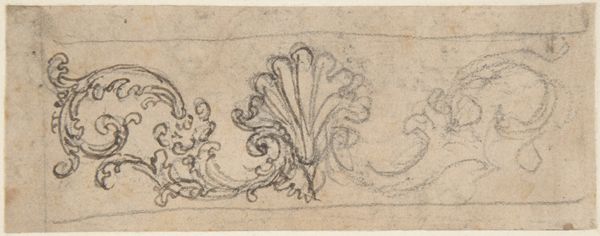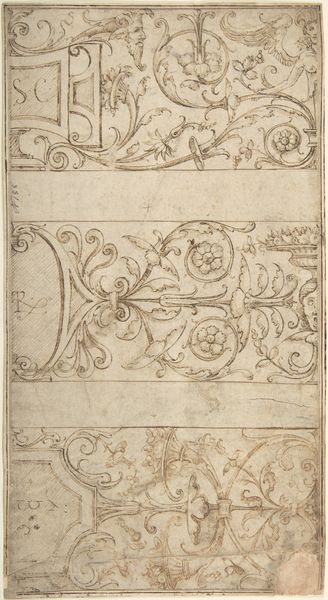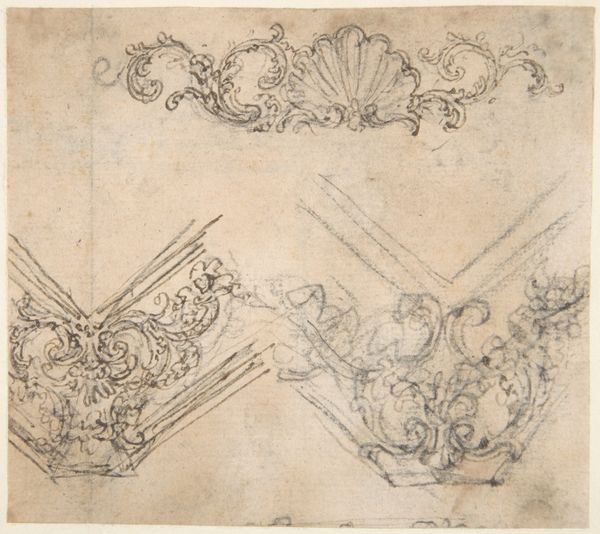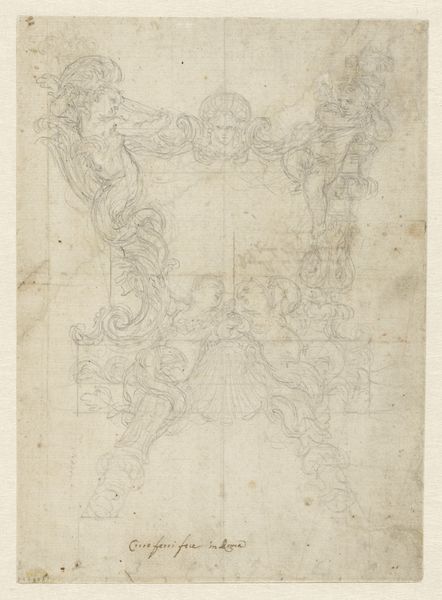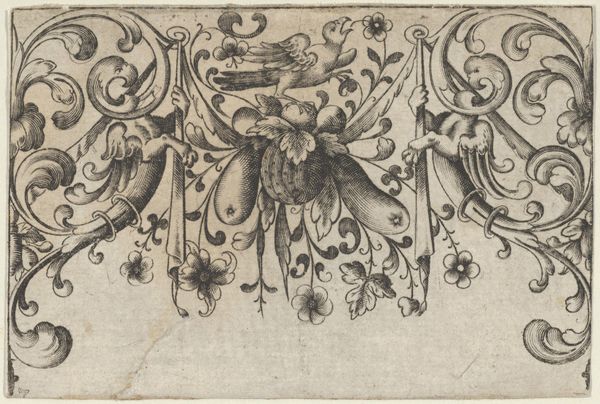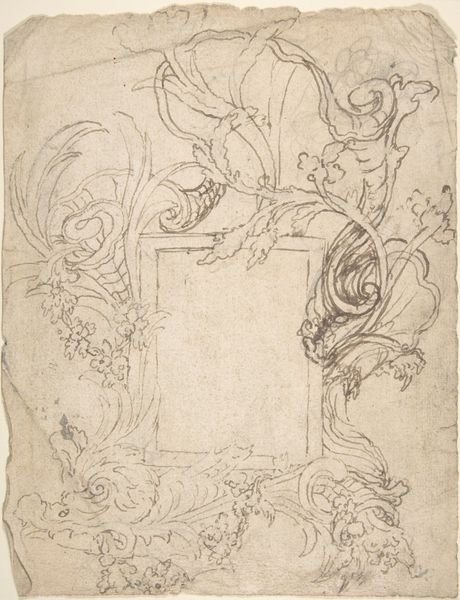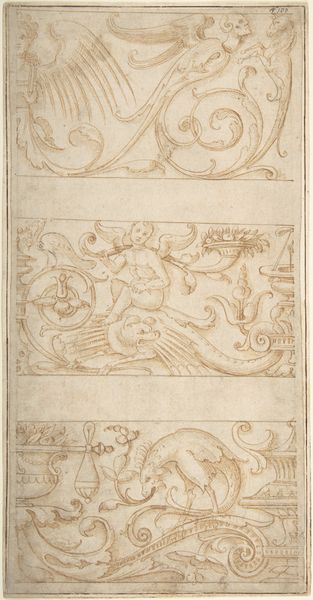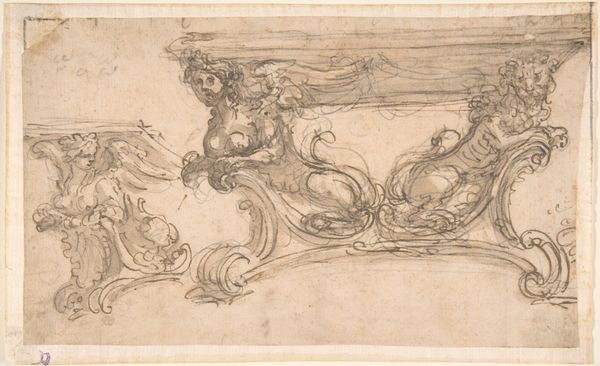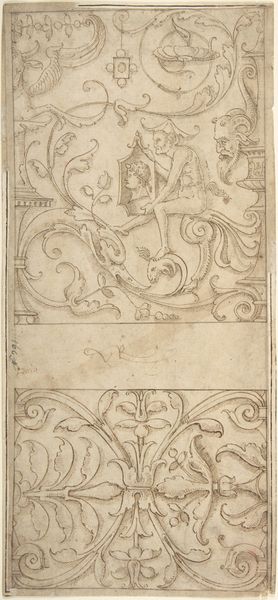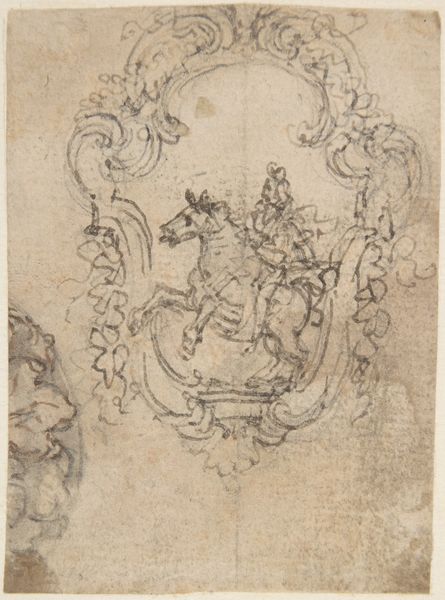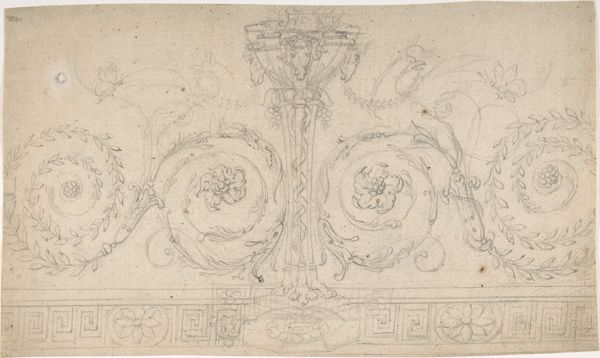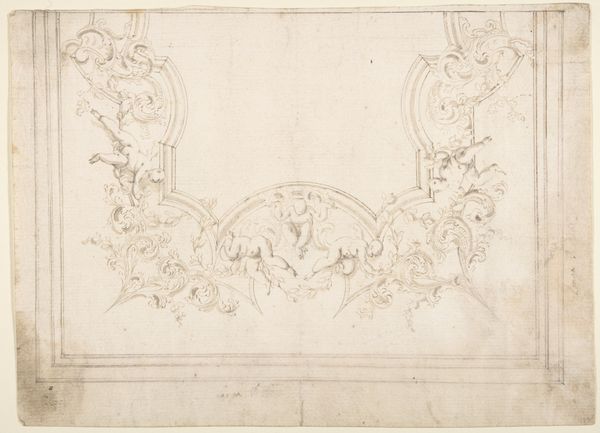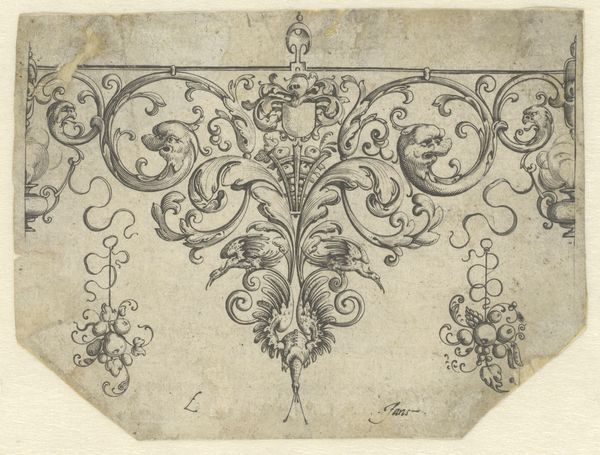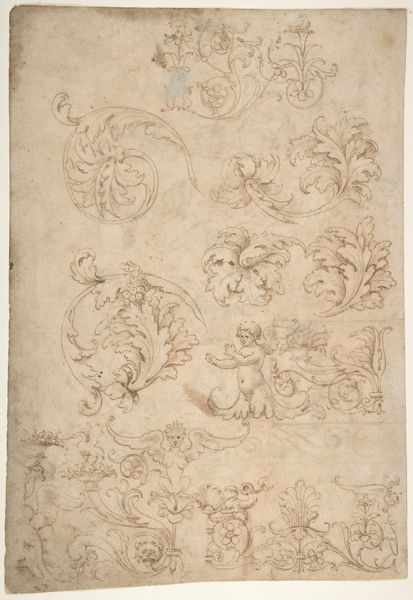
Designs for a Palmette Motif with Tendrils (recto); studies for a Male Figure and Decorative Sculpture (verso) 1652 - 1725
0:00
0:00
drawing, ornament, print, paper, pencil
#
drawing
#
ornament
#
baroque
# print
#
paper
#
form
#
pencil
#
line
Dimensions: sheet: 2 13/16 x 3 7/8 in. (7.2 x 9.8 cm)
Copyright: Public Domain
Curator: Here we have "Designs for a Palmette Motif with Tendrils," a drawing with studies on the verso by Giovanni Battista Foggini, dating sometime between 1652 and 1725. What do you make of it? Editor: My first impression is one of lightness and almost ethereal grace, but also incompleteness. The sketches feel like captured wisps of ideas, quickly jotted down. Curator: I agree. You can almost feel the artist grappling with form. It’s fascinating to consider Foggini’s process, pencil on paper, iterating and developing these ornamental motifs. Think about the economic context. He wasn't producing a finished masterpiece for the elite, but something intended for a wider distribution, maybe even for craftsmen adapting his designs. Editor: Absolutely, these forms ripple through cultural memory, don’t they? Palmettes, the stylized fan-shaped motif we see prominently featured, evokes ancient Egyptian and Greek art. Seeing it reinterpreted in a Baroque context…it speaks volumes about the continuity of visual language across centuries. It is as if the forms become vessels filled and emptied throughout time. Curator: Exactly. The act of drawing here, and the physical properties of the paper itself, they both become central to understanding its meaning. You see how the line weight shifts from delicate to emphatic. This wasn't about a final, polished image. It’s the *process* made visible. It shows us the relationship between the object made by hand and its intended effect of beautification on its intended consumer. Editor: And look at the tendrils, almost grasping, reaching upwards. They add such dynamism. It almost becomes a study of desire or growth. Even in just a few swift marks, you feel that Baroque sense of movement, tension, of *becoming*. They're really a part of the shared subconscious. It touches a universal symbol. Curator: That reading adds so much depth. For me, though, it’s about understanding these materials, these marks as labor and intent combined. Without a deep understanding of that the cultural baggage is lost in decoration and abstraction. Editor: Well, regardless of whether it's labor or a message through symbolism, Foggini has undeniably achieved the task of transporting viewers, connecting the ancient to the emerging present. It becomes much more. Curator: Yes, and understanding that impact circles back to that materiality, which is always linked to a place and time, shaping the aesthetic choices we still echo. It certainly underscores the rich, layered understanding of artistic innovation that Foggini provides.
Comments
No comments
Be the first to comment and join the conversation on the ultimate creative platform.
